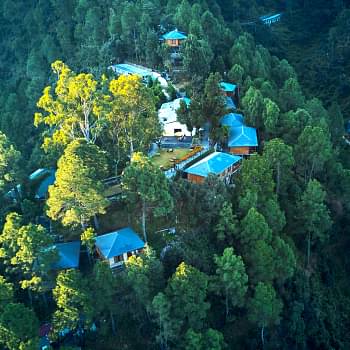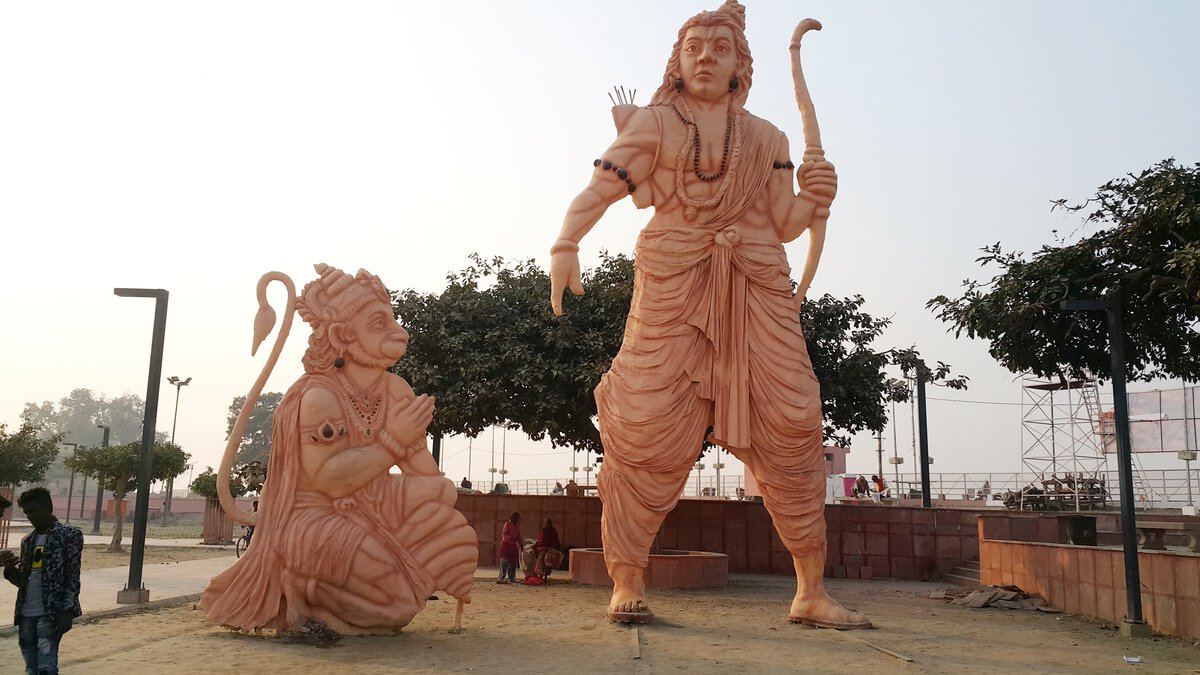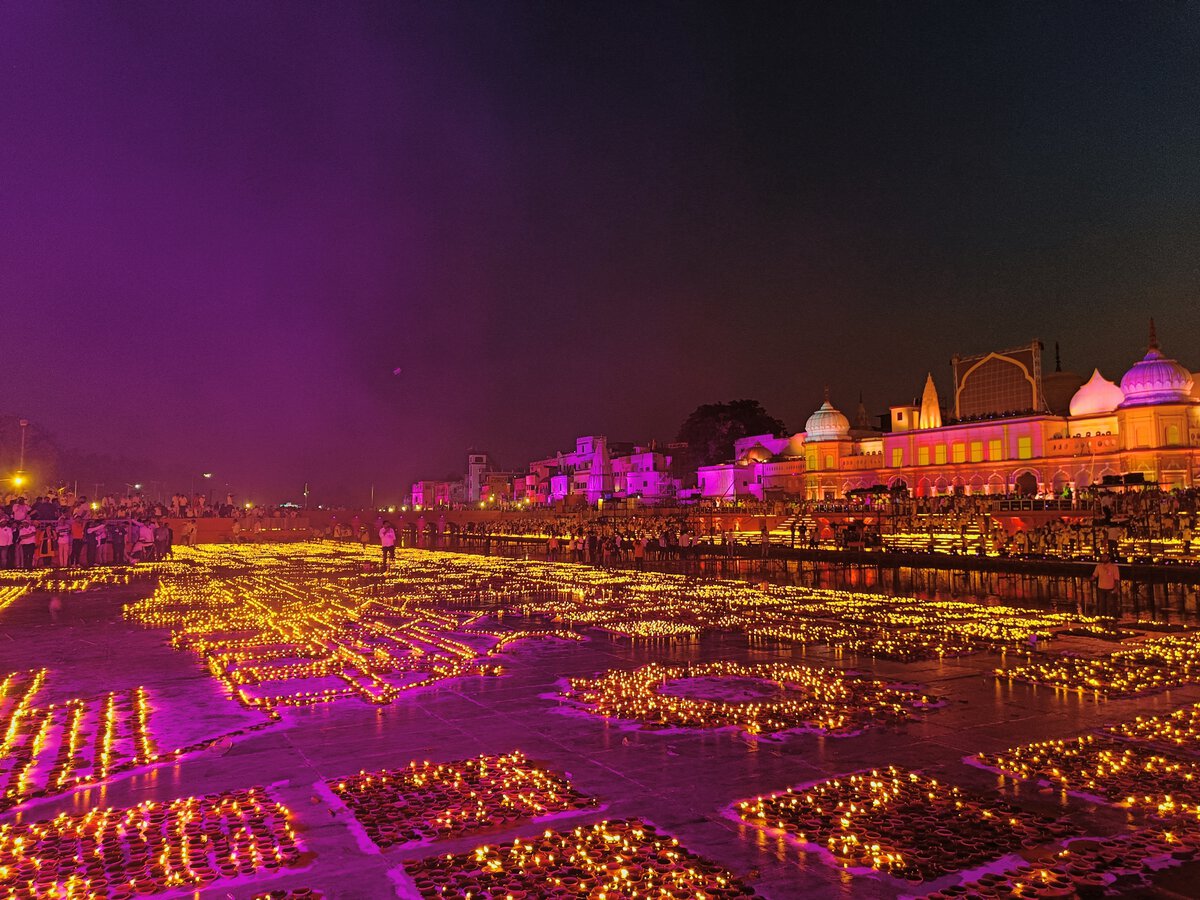January 08, 2024
Facts About Ayodhya You Wouldn’t Want To Miss
CM Content Team


View all
140+
Resorts
January 08, 2024
CM Content Team
Ayodhya, a revered city in northern India, holds deep cultural and religious significance as the birthplace of Lord Rama in Hinduism. Renowned for its spiritual heritage, Ayodhya has been a source of inspiration and pilgrimage for centuries.
There are many interesting facts about Ayodhya, some are known while the others are not. Like almost everyone knows that Ayodhya is the birthplace of Lord Ram. However, did you know how it got its name or its connection to South Korea?
We bring you some faintly known and unknown historical facts about Ayodhya.

Here’s one of the historical facts about Ayodhya. The name ‘Ayodhya’ comes from the Sanskrit word ‘yudh,’ meaning ‘to fight’ or ‘to wage war.’ Adding ‘a’ as a negative prefix and using ‘yodhya’ as a future passive participle gives the sense of ‘not to be fought’ or, in simpler terms, ‘invincible’ in English.
For many, this is one of the unknown facts about Ayodhya. In the 6th century, modern-day Ayodhya was known as Saketa, a city of great importance. Early Buddhist and Jain texts mention that revered religious figures, Gautama Buddha and Mahavira, not only visited but also resided in the city.
This highlights Ayodhya's significance as a prominent spiritual and cultural centre during that time, attracting influential figures. The presence of Buddha and Mahavira in Ayodhya shows the city's rich history and its role in fostering spiritual growth and interfaith connections throughout the centuries.
In ancient India, Ayodhya was the capital of the illustrious 'Kingdom of Kosala.' Ruled by esteemed monarchs like Sagar, Bhagirath, Raghu, Dileep, Dashrath, and Ram, the city of Kosaldesh was steeped in regal history. Ayodhya, with its sacred heritage, witnessed the reigns of these noble kings, each leaving a significant imprint on the kingdom's legacy.
Long ago, Ayodhya was also known as Vinita, and Rishabhanatha was born there. Rishabhanatha, alongside Mahavira, Parshvanath, Neminath, and Shantinath, holds a significant place among the five Tirthankaras highly revered by Jains. As per historical facts about Ayodhya, Rishabhanatha was born to King Nabhi and Queen Marudevi in the city.
This is one of the facts about Ayodhya that has astounded many.
Legend has it that Kanak Bhawan was a special present from Kaikeyi, to Devi Sita right after her wedding to Lord Ram. Kaikeyi was the stepmother of Lord Ram.
Kanak means gold in Hindi, and the temple got its name because it used to shine with gold ornaments and decorations. This was Kaikeyi's way of showing love and affection to her new daughter-in-law, Devi Sita. Kanak Bhawan is among the best places to visit in Ayodhya.
Some interesting facts about Ayodhya just leave people marvelling at its impact on the world. South Korean tradition holds that their ancestry is linked to Princess Suriratna of Ayodhya, also known as Heo Hwang-ok. Born to King Padmasen and Indumati, she married King Suro of Geumgwan approximately 2,000 years ago. This historical connection between India and Korea signifies a shared cultural heritage and highlights the longstanding ties between the two nations.
The story of Heo Hwang-ok has transcended geographical boundaries and demonstrates the importance of cultural exchange throughout history. Today, the legend of Princess Suriratna remains a significant part of Korean historical and cultural identity.
This is one of the well-known facts about Ayodhya. Raja Harishchandra, renowned for his unwavering commitment to truth, is believed to have been born in Ayodhya. Legends recount his selfless sacrifices, including relinquishing his kingdom, selling his family, and becoming a slave, all to fulfil a promise made to Sage Vishvamitra. His story highlights Ayodhya's rich cultural history and the values associated with this ancient city, emphasizing the importance of truth, honesty, and integrity that continue to inspire generations of Indians.
Gopratara Tirtha, now known as Guptar Ghat, is a sacred site in Ayodhya situated along the banks of the Sarayu River. According to legend, Lord Rama and his followers ascended to heaven by entering the waters of Sarayu at this location. This event is deeply rooted in Hindu mythology and signifies the end of Lord Rama's earthly life. Guptar Ghat holds immense spiritual significance for devotees, who visit the site to pay homage and seek blessings.
In March 2001, Ayodhya, India, established sister city ties with Gimhae, South Korea. This connection was based on the historical and cultural links between the two cities, particularly the marriage of Princess Suriratna (Heo Hwang-ok) from Ayodhya to King Suro of Geumgwan Gaya in Korea. In November 2014, Ayodhya further strengthened its international bonds by forming a sister city relationship with Janakpur, Nepal. These sister city relationships promote cultural exchange, mutual understanding, and cooperation between the cities, highlighting the shared history and fostering stronger ties between the countries involved.
This is amidst the latest facts about Ayodhya. The Ayodhya Ram Temple, currently being built at the Ram Janmabhoomi site, will be one of the biggest temples in India since independence. Dedicated to Lord Rama, it's essential for Hindus. Once finished, it's expected to bring in millions of pilgrims and tourists, making Ayodhya even more famous as a religious and cultural centre.
The temple complex is large, covering 54,700 sq ft on nearly 2.7 acres of land. In the broader 70-acre Ram Mandir Complex, it can host around a million devotees. The temple itself is quite impressive, being 360 ft long, 235 ft wide, and 161 ft high, with five domes and a special sanctum designed to let sunlight fall on the idol of Ram Lalla. These are just some of the Ram Mandir facts.
There are many more facts about Ayodhya Ram Temple and its grandeur. Here are some of them.

Are you amazed by these interesting facts about Ayodhya? If so, you would love to experience the city and its culture.
 Reaching Ayodhya is relatively accessible, and various transportation options are available. Here's a guide on how to reach Ayodhya:
Reaching Ayodhya is relatively accessible, and various transportation options are available. Here's a guide on how to reach Ayodhya:
By Air: The nearest airport to Ayodhya is the Ayodhya Airport (FAZY). While it primarily serves general aviation, the Lucknow International Airport (LKO) is the major airport nearby. From Lucknow, which is approximately 140 kilometres away, you can hire a taxi or take a bus to Ayodhya.
By Train: Ayodhya has its own railway station, known as Ayodhya Dham Junction (AY). It is well-connected to major cities across India. Regular trains operate to and from Ayodhya, facilitating convenient travel options for visitors.
By Road: Ayodhya is well-connected by road, and buses from various cities in Uttar Pradesh and neighbouring states regularly ply to the city. The Uttar Pradesh State Road Transport Corporation (UPSRTC) and private operators offer bus services. You can also hire taxis or drive to Ayodhya using the well-maintained road network.
Now that you know how to reach Ayodhya, plan your trip soon! You can share some of the above interesting historical facts about Ayodhya while travelling to the city.
Mahindra Holidays & Resorts India Ltd. (MHRIL), a part of Leisure and Hospitality sector of the Mahindra Group, offers quality family holidays primarily through vacation ownership memberships and brings to the industry values such as reliability, trust and customer satisfaction. Started in 1996, the company's flagship brand ‘Club Mahindra’, today has over 300,000 members , who can holiday at 140+ resorts in India and abroad.
We use cookies to personalise content and to provide you with an improved user experience.By Continuing to browse this site you consent to the use of cookies.Please visit our cookie policy for further details.

Welcome to ClubMahindra.com In order to provide a personalised experience for you, we use cookies to enable some website functionality. Cookies help us see which articles most interest you; allow you to easily share articles on social media channels; permit us to deliver content personalised to your interests and locations; along with many other site benefits. For more information, please review our Cookie Policy
When you visit any website, it may store or retrieve information on your browser, mostly in the form of cookies. This information might be about you, your preferences or your device and is mostly used to make the site work as you expect it to. The information does not usually directly identify you, but it can give you a more personalized web experience. Because we respect your right to privacy, you can choose not to allow some types of cookies. Click on the different category headings to find out more and change our default settings. However, blocking some types of cookies may impact your experience of the site and the services we are able to offer.
Because we respect your right to privacy, you can choose not to allow some types of cookies and you have the right to withdraw your consent by send a mail to email id [email protected]
These cookies are essential in order to enable you to move around the site and use its features, such as accessing secure areas of the site. Without these cookies, services you have asked for cannot be provided.
These cookies allow us to employ data analytics so we can measure and improve the performance of our site and provide more relevant content to you. These cookies don't collect information that identifies a visitor down to an individual level that is available to us. These cookies are not passing personally identifiable information to any external third party other than in limited cases when we engage a service provider to act on our behalf but who is then unable to use the data for their own purposes.
Performance cookies are generally third-party cookies from vendors we work with or who work on our behalf that collect information about your visit and use of the Club Mahindra website, for instance which pages you visit the most often, and if you get error messages from web pages. These cookies don't collect information that identifies a visitor. All information these cookies collect is anonymous and is only used to improve your overall experience on how the website works. Third party vendors may have access to this data and may use it to improve their overall services and offerings.
Functionality cookies allow a site to remember choices you make (such as your user name, language or the region you are in) and provide more enhanced, personal features. These cookies cannot track your browsing activity on other websites. They don't gather any information about you that could be used for advertising or remembering where you've been on the Internet outside our site.
Third-party advertising and social media cookies are used to (1) deliver advertisements more relevant to you and your interests; (2) limit the number of times you see an advertisement; (3) help measure the effectiveness of the advertising campaign; and (4) understand people's behaviour after they view an advertisement. They are usually placed on behalf of advertising networks with the site operator's permission. They remember that you have visited a site and quite often they will be linked to site functionality provided by the other organization. This may impact the content and messages you see on other websites you visit. If you do not allow these cookies you may not be able to use or see certain these sharing tools content on our website.